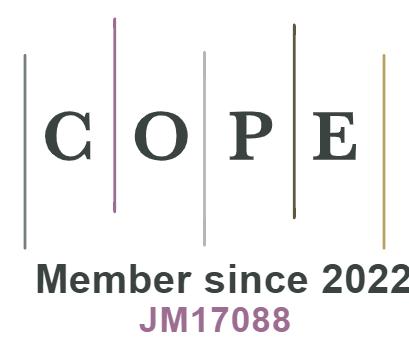REFERENCES
1. Yoo S, Kim S, Kim S, Kang BB. AI-HydRa: advanced hybrid approach using random forest and deep learning for malware classification. Inf Sci 2021;546:420-35.
2. Park JH, Farkhodov K, Lee SH, Kwon KR. Deep reinforcement learning-based DQN agent algorithm for visual object tracking in a virtual environmental simulation. Appl Sci 2022;12:3220.
3. Fragkos G, Tsiropoulou EE, Papavassiliou S. Disaster management and information transmission decision-making in public safety systems. In: 2019 IEEE Global Communications Conference (GLOBECOM). IEEE; 2019. pp. 1–6.
4. Salehinejad H, Sankar S, Barfett J, Colak E, Valaee S. Recent advances in recurrent neural networks. arXiv preprint arXiv:180101078 2017.
5. Osco LP, Junior JM, Ramos APM, et al. A review on deep learning in UAV remote sensing. Int J Appl Earth Obs Geoinf 2021;102:102456.
6. Gunning D, Stefik M, Choi J, et al. XAI—Explainable artificial intelligence. Sci Robot 2019;4:eaay7120.
7. Keneni BM, Kaur D, Al Bataineh A, et al. Evolving rule-based explainable artificial intelligence for unmanned aerial vehicles. IEEE Access 2019;7:17001-16.
8. Došilović FK, Brčić M, Hlupić N. Explainable artificial intelligence: A survey. In: 2018 41st International convention on information and communication technology, electronics and microelectronics (MIPRO). IEEE; 2018. pp. 0210–15.
9. Samek W, Müller KR. Towards explainable artificial intelligence. Explainable AI: Interpreting, Explaining and Visualizing Deep Learning. Cham: Springer International Publishing; 2019. pp. 5-22.
10. Lima BN, Balducci P, Passos RP, et al. Artificial intelligence based on fuzzy logic for the analysis of human movement in healthy people: a systematic review. Artif Intell Rev 2021;54:1507-23.
11. Barawkar S, Kumar M. Force-torque (FT) based multi-drone cooperative transport using fuzzy logic and low-cost and imprecise FT sensor. Proc Inst Mech Eng G J Aerosp Eng 2023:09544100231153686.
12. De Reus N. Assessment of benefits and drawbacks of using fuzzy logic, especially in fire control systems. FYSISCH EN ELEKTRONISCH LAB TNO THE HAGUE (NETHERLANDS); 1994.
13. Albertos P, Sala A. Fuzzy logic controllers. Advantages and drawbacks. In: VIII international congress of automatic control. vol. 3; 1998. pp. 833–44.
14. Dewi T, Nurmaini S, Risma P, Oktarina Y, Roriz M. Inverse kinematic analysis of 4 DOF pick and place arm robot manipulator using fuzzy logic controller. Int J Electr Comput Eng 2020;10:1376.
15. Štefek A, Pham VT, Krivanek V, Pham KL. Optimization of fuzzy logic controller used for a differential drive wheeled mobile robot. Appl Sci 2021;11:6023.
16. Mishra DK, Thomas A, Kuruvilla J, et al. Design of mobile robot navigation controller using neuro-fuzzy logic system. Comput Electr Eng 2022;101:108044.
17. Lim S, Yu H, Lee H. Optimal tethered-UAV deployment in A2G communication networks: Multi-agent Q-learning approach. IEEE Internet Things J 2022;9:18539-49.
18. Elistair;. Available from: https://elistair.com/. [Last accessed on 18 Mar 2024].
19. Fotokite;. Available from: https://fotokite.com/. [Last accessed on 18 Mar 2024].
20. Hoverfly; 2021. Available from: https://hoverflytech.com/ . [Last accessed on 18 Mar 2024].
21. Barawkar S, Kumar M, Cohen K. Tether controlled drone. Google Patents; 2022. US Patent App. 17/385,026.
22. Barawkar S, Radmanesh M, Kumar M, Cohen K. Fuzzy logic based variable damping admittance control for multi-UAV collaborative transportation. In: 2018 Annual American Control Conference (ACC). IEEE; 2018. pp. 2084–89.
23. Barawkar S, Radmanesh M, Kumar M, Cohen K. Admittance based force control for collaborative transportation of a common payload using two uavs. In: ASME 2017 Dynamic Systems and Control Conference. American Society of Mechanical Engineers Digital Collection; 2017.
24. Augugliaro F, D'Andrea R. Admittance control for physical human-quadrocopter interaction. In: 2013 European Control Conference (ECC). IEEE; 2013. pp. 1805–10.
25. Breese B, Scott D, Barawkar S, Kumar M. Fuzzy logic controller for force feedback control of quadcopter via tether. In: Dynamic Systems and Control Conference. vol. 84287. American Society of Mechanical Engineers; 2020. p. V002T36A008.
26. Ghamry KA, Dong Y, Kamel MA, Zhang Y. Real-time autonomous take-off, tracking and landing of UAV on a moving UGV platform. In: 2016 24th Mediterranean conference on control and automation (MED). IEEE; 2016. pp. 1236–41.
27. Guérin F, Guinand F, Brethé JF, et al. UAV-UGV cooperation for objects transportation in an industrial area. In: 2015 IEEE International Conference on Industrial Technology (ICIT). IEEE; 2015. pp. 547–52.
28. Fagiano L. Systems of tethered multicopters: modeling and control design. IFAC-PapersOnLine 2017;50:4610-15.
29. Martinez Rocamora Jr B, Lima RR, Samarakoon K, et al. Oxpecker: A tethered uav for inspection of stone-mine pillars. Drones 2023;7:73.
30. Lee T. Geometric controls for a tethered quadrotor UAV. In: 2015 54th IEEE conference on decision and control (CDC). IEEE; 2015. pp. 2749–54.
31. Kourani A, Daher N. Marine locomotion: A tethered UAV-buoy system with surge velocity control. Rob Auton Syst 2021;145:103858.
32. Glick T, Arogeti S. Control of tethered drones with state and input constraints-a unified model approach. In: 2018 International Conference on Unmanned Aircraft Systems (ICUAS). IEEE; 2018. pp. 995–002.
33. Sandino LA, Bejar M, Kondak K, Ollero A. On the use of tethered configurations for augmenting hovering stability in small-size autonomous helicopters. J Intell Robot Syst 2013;70:509-25.
34. Nicotra MM, Naldi R, Garone E. Nonlinear control of a tethered UAV: The taut cable case. Automatica 2017;78:174-84.
35. Mokhtari A, Benallegue A. Dynamic feedback controller of Euler angles and wind parameters estimation for a quadrotor unmanned aerial vehicle. In: IEEE International Conference on Robotics and Automation, 2004. Proceedings. ICRA'04. 2004. vol. 3. IEEE; 2004. pp. 2359–66.
36. Ali ZA, Zhangang H. Maneuvering control of hexrotor UAV equipped with a cable-driven gripper. IEEE Access 2021;9:65308-18.
37. Escareño J, Salazar S, Romero H, Lozano R. Trajectory control of a quadrotor subject to 2D wind disturbances: Robust-adaptive approach. J Intell Robot Syst 2013;70:51-63.
38. Kumar R, Agarwal SR, Kumar M. Modeling and Control of a Tethered Tilt-Rotor Quadcopter with Atmospheric Wind Model. IFAC-PapersOnLine 2021;54:463-68.
39. Michael N, Mellinger D, Lindsey Q, Kumar V. Experimental evaluation of multirobot aerial control algorithms. IEEE Robot Autom Mag 2010;17:56-65.
40. Kawasaki H, Ito S, Ramli RB. Adaptive decentralized coordinated control of multiple robot arms. IFAC Proc Vol 2003;36:387-92.
41. Barawkar S, Kumar M. Fuzzy logic force-torque feedback controller for multi-drone cooperative transport with offset cg. IFAC-PapersOnLine 2021;54:605-10.
42. Barawkar S. Collaborative transportation of a common payload using two UAVs based on force feedback control. University of Cincinnati; 2017. Available from: http://rave.ohiolink.edu/etdc/view?acc_num=ucin1505125636211596. [Last accessed on 18 Mar 2024].
43. Barawkar S, Kumar M. Cooperative Transport of a Payload With Offset CG Using Multiple UAVs. In: Dynamic Systems and Control Conference. vol. 59162. American Society of Mechanical Engineers; 2019. p. V003T21A008.
44. Robotis. TurtleBot 3 Burger; 2023. Available from: https://www.robotis.us/turtlebot-3-burger-us/. [Last accessed on 18 Mar 2024].
45. Bitcraze. Crazyflie 2.1; 2023. Available from: https://www.bitcraze.io/products/crazyflie-2-1/. [Last accessed on 18 Mar 2024].
46. Hua B, Ni H, Zhu Q, et al. Channel modeling for UAV-to-ground communications with posture variation and fuselage scattering effect. IEEE Trans Commun 2023;71:3103-16.
47. Mao K, Zhu Q, Song M, et al. Machine-learning-based 3-D channel modeling for U2V mmWave communications. IEEE Internet Things J 2022;9:17592-607.







